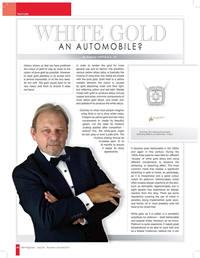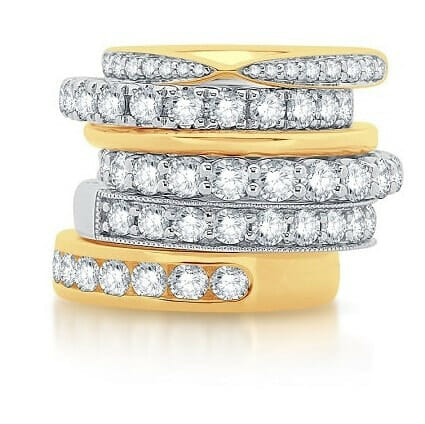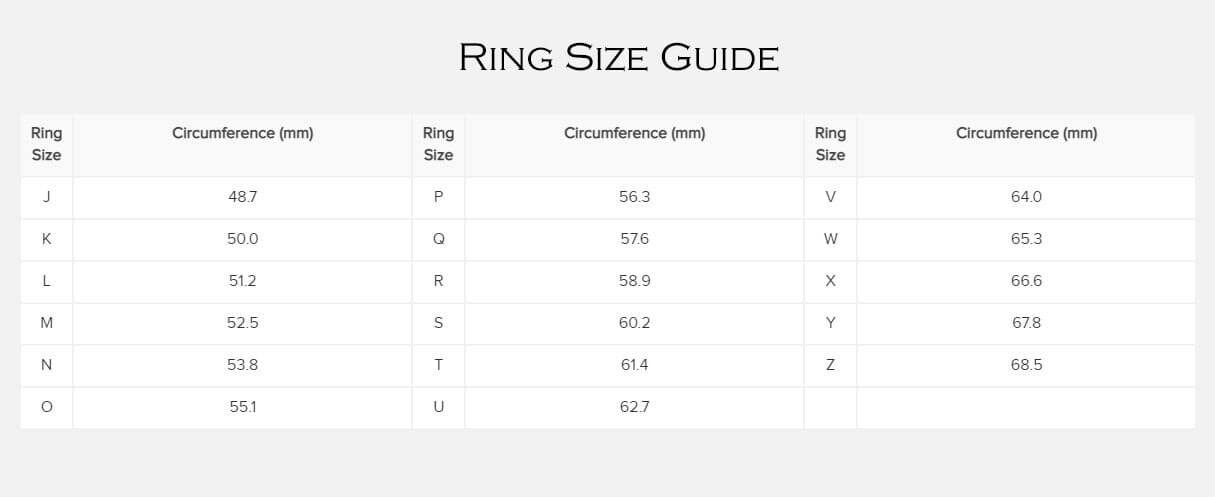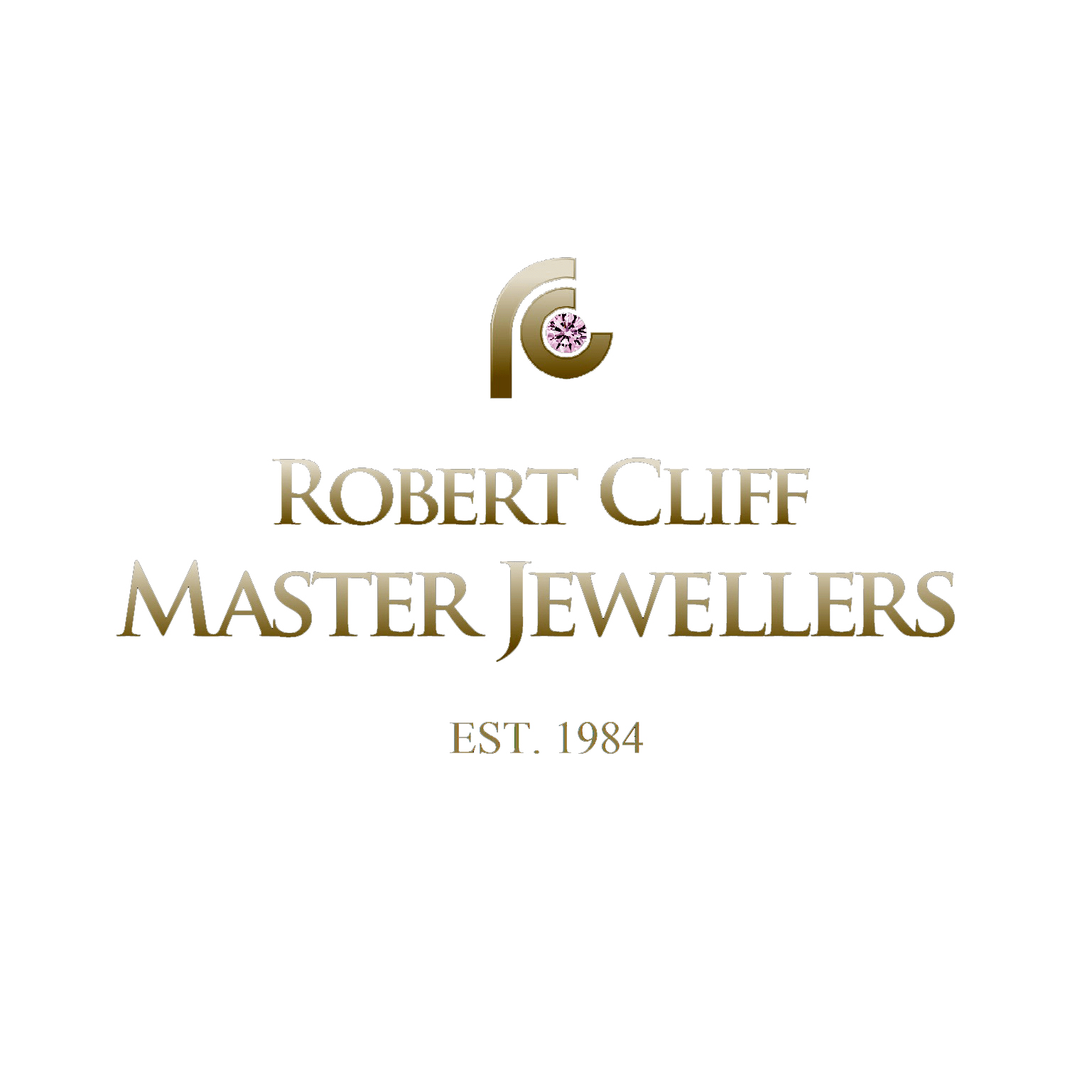History shows us that we have preferred the colour of gold to stay as close to the colour of pure gold as possible. However to wear gold jewellery in its purest form is almost impossible, or at the very least, far too short. The gold would have to be very heavy and thick to ensure it does not bend.
In order to harden the gold for more general use and to fashion into jewellery, various yellow alloys (alloy is basically the mixture of more than one metal) are mixed with pure gold. Gold itself is a yellow metallic element; the colour is caused by gold absorbing violet and blue light but reflecting yellow and red light. Metals mixed with gold to produce alloys include copper and silver, common components of most yellow gold alloys, and nickel, zinc and palladium to produce the white alloys.
Contrary to what most people imagine, white Gold is not a shiny white metal. It begins as yellow gold and has many components to create its beautiful gleam, not the least its rhodium coating applied after completion – wihtout this, the white-gold might be dull, grey or even a pale pink. The rhodium plating should be re-plated each 12 to 18 months to ensure it keeps its shiny appearance.
It became quite fashionable in the 1920s and again in this century. During the 1920s three patents were filed for different ‘recipes’ of white gold alloys and using different components to produce the whitening, or bleaching affect. The most common metal that creates a significant bleaching in gold is nickel, an advantage, as it is inexpensive and a good colour match for platinum. Unfortunately, nickel often created allergic reactions on skin, such as dermatitis. Approximately one in eight people may experience an allergic reaction from this alloy. There are some regulations covering the use of nickel in jewellery being implemented quite soon, and hence, all or most jewellery sold will have to be nickel-free.
White gold, as it is called, is a wonderful substiture for platinum – itself fashionable and popular today. However, as we know, Platinum is quite expensive. It needs great temperatures to be able to work with and as a Master Craftsman, believe me, it can be quite hard to work with; much more complex than gold, although it is an ideal setting metal for Diamonds.
The other metal ideal as a component to create white gold alloy is palladium, a very close relative to platinum. Its disadvantage is that it is quite expensive. Another disadvantage is the high melting point – a jeweller’s workshop must be quite modernised in order to cope.
Another hidden factor in the high cost of alloy components is that there are large proportions of scrap produced during jewellery manufacture. Because this involves expensive precious metal alloys, recycling is very important. Also, when scrap contains high levels of expensive metals like palladium, there are extra costs involved in recovering it, which have to be added back to the production costs.
Other bleachers include silver, platinum, chromium, cobalt, tin, zinc and indium. Silver would be a great property, but unfortunately, it does not have very great bleaching effect. Copper does not tend to whiten. A typical palladium containing white gold alloy might be, in parts per thousand; Gold 750, Silver 40, Copper 40 and Palladium 170.
I prefer to use 18ct white gold alloys for our diamond rings, containing palladium, ehich is nickel-free.
White gold is a magnificent alternative to Platinum when utilising Diamonds, as the colour itself enhances these beautiful stones and helps to reflect and dazzling light.
On a less serious but certainly interesting final note, white gold has been utilised in a variety of non-jewellery items, not the least of which has been a car!
Yes, as only a totally self-indulged billionaire who obviously has it all would want – using the term very lightly, the ‘car’ was a Mercedes, fully built in white gold, with a price tag of approximately$50 million! How do you put a price tag on this! Have a look for yourself – Just Google benz-in-white-gold.
Robert CLiff Master Jewellers
Shop 380A Castle Towers
Castle Hill, NSW 2154
p | 02 8850 5400
e | [email protected]
w | robertcliffmasterjewellers.com.au
More coming soon…












